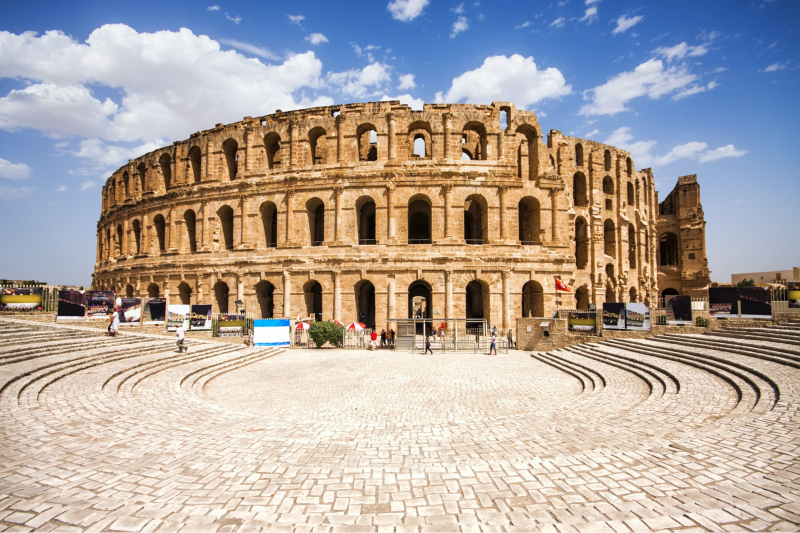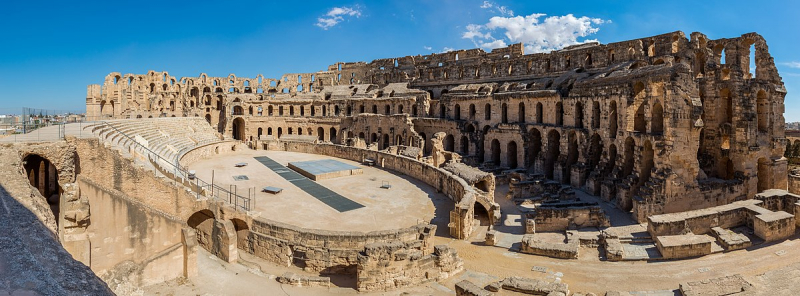El Jem Amphitheatre
In the present-day Tunisian city of El Jem Amphitheatre , originally Thysdrus in the Roman province of Africa, there is an oval amphitheater called the Amphitheatre of El Jem. Since 1979, UNESCO has included it on its list of World Heritage Sites.
The amphitheater was constructed in Thysdrus, which is now El Jem, Tunisia, and was part of the Roman province of Africa Proconsularis, in the year 238 AD. It is exceptional in Africa and one of the best-preserved Roman stone ruins on the entire globe. It is one of the largest amphitheatre in the world and was constructed for spectator events, like other amphitheatres in the Roman Empire. The big and small axes are respectively 148 meters (486 feet) and 122 meters in length, and the anticipated capacity is 35,000. The amphitheatre is made of stone blocks, situated on level ground, and has been preserved unusually well.
Today, you descend a set of steps that resemble stadium seats to get to El Jem Amphitheatre. Explore every crevice of the historic stadium within, from the arena where gladiators would have been waiting to fight them to the underground corridors where animals were prepared for games. For a more thorough overview of the theater's history, you may also sign up for a guided tour. Otherwise, take your time exploring the area before visiting the small store to buy a souvenir.
The Colosseum in Rome, which is older and larger but not much so than the El Jem Amphitheatre, looks a lot like it from the exterior. Many contend that the El Jem Amphitheatre is actually in greater shape than the Colosseum due to its numerous original features, like its tiered seats, arches, and elliptical stone walls, some of which are intact up to 35 meters in length.
Location: musée, El Jem 5160, Tunisia











